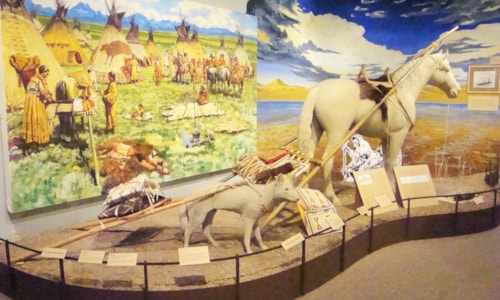Valley of 10,000 Haystacks – The Big Hole Basin
Montana Highway 278, Milepost 50
Surrounded my magnificent mountain ranges, the Big Hole Valley has been inhabited by humans for thousands of years. The valley was a crossroads for the Shoshone, Nez Perce, Blackfeet and Salish people who called it waters of the Pocket Gopher when translated to English.
William Clark provided the first written description of the valley after crossing nearby Gibbon’s Pass on July 6th, 1806. “We ascended a small rise and beheld open beautiful valley. In every direction around which I could see high points of mountains covered with snow.” British and American fur brigades knew the valley well in the early 19th century. Prospectors panned the valleys streams after the discovery of gold and Grasshopper Creek, 30 miles to the southwest, in 1862. The first ranchers drove cattle into the valley in the 1870s. The valleys harsh winters deterred the establishment of farms in the Big Hole.
In 1910, Dade Stevens and H. Armitage invented the Sunny Slope Slides Stacker, popularly known as the beaver slide., which revolutionized haying in Montana. It kept the wind from blowing the hay away and cut stacking time considerably. To work the gadget, a large rake piled high with hay is run up the arms of the sloped side of the device. At the top, the hay dumps onto the stack. The side gates keep the stack in a neat pile and make it possible to stack the hay higher. Although the lifting of the rake is now mechanically powered, some ranchers still prefer horse steams to muscle the hay up the slide.












